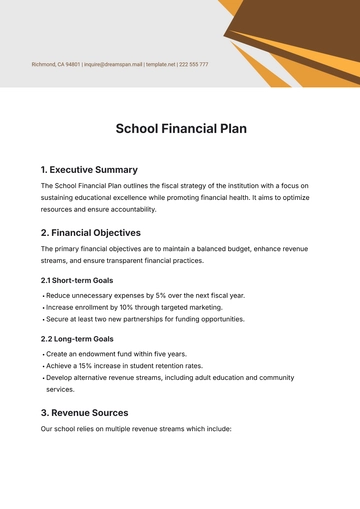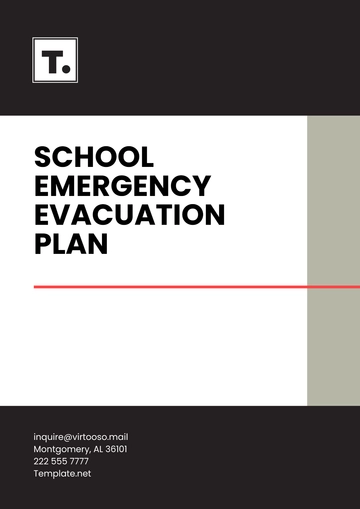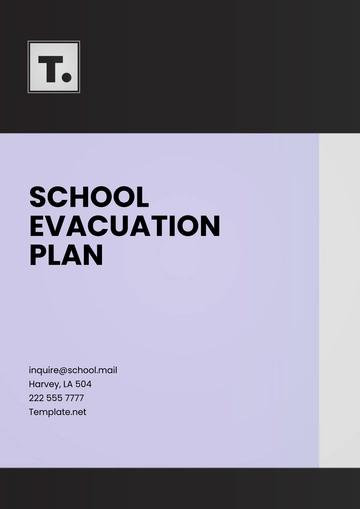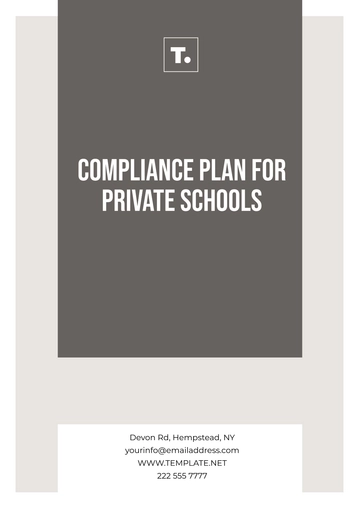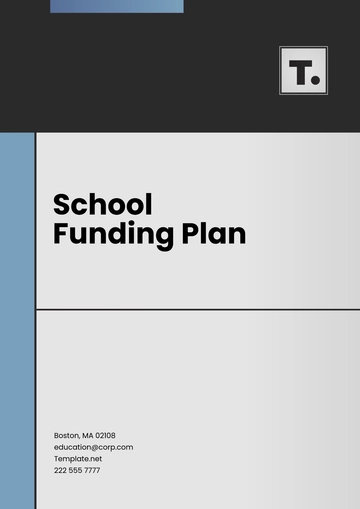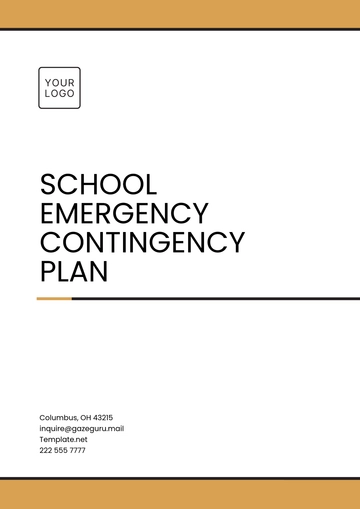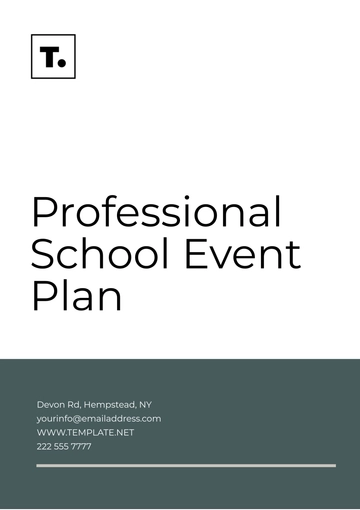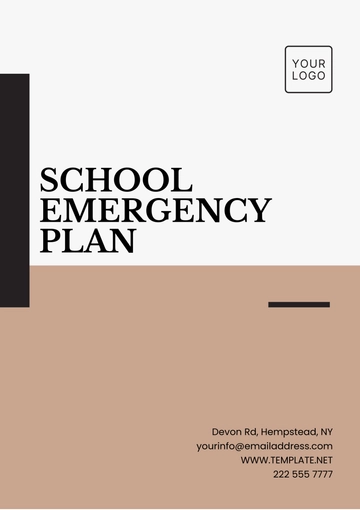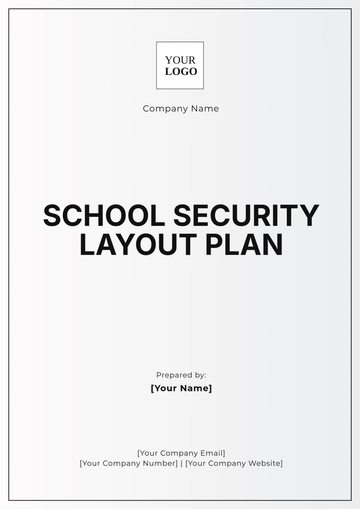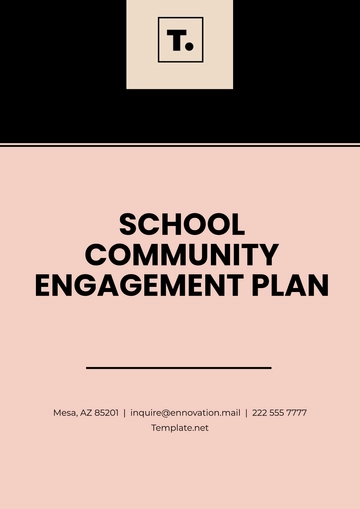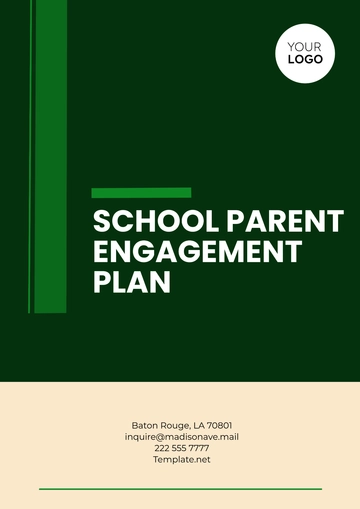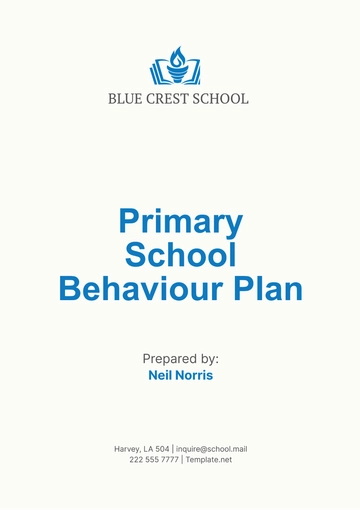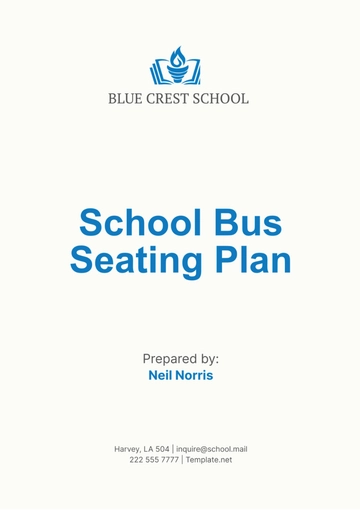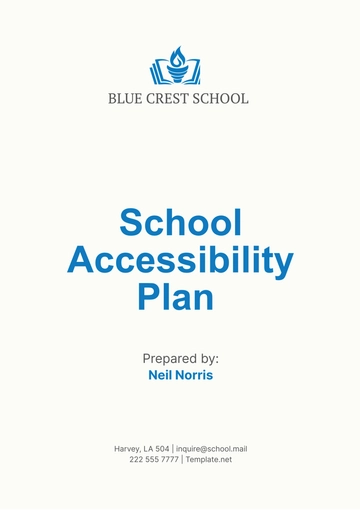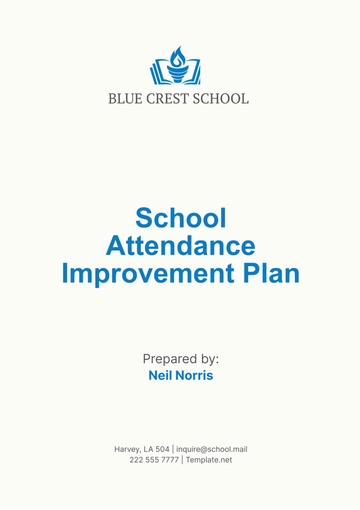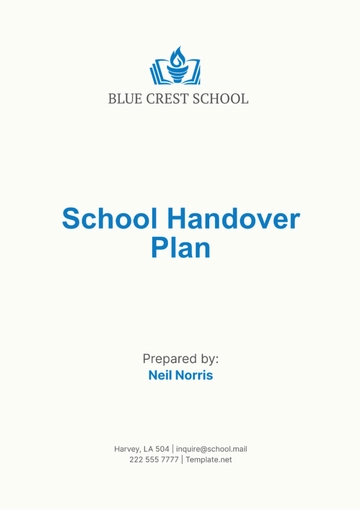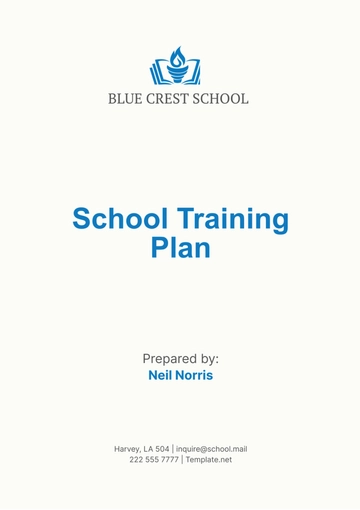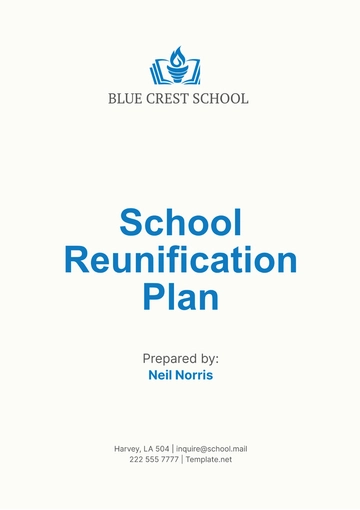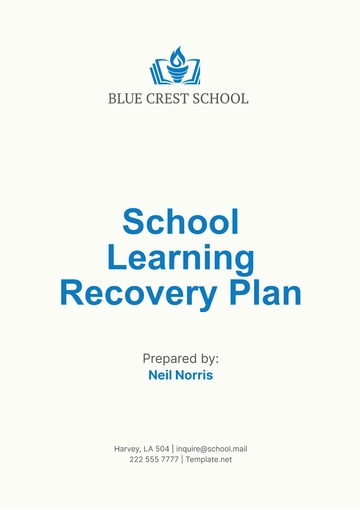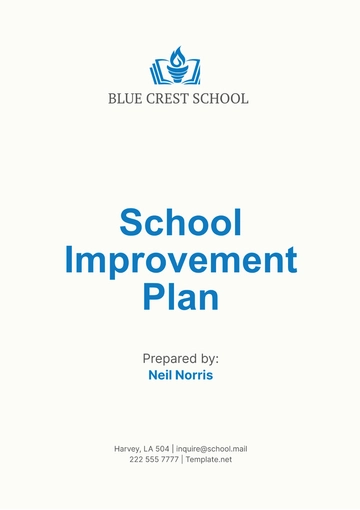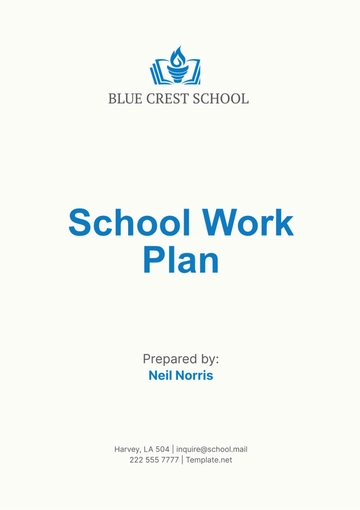Free School Re-Entry Plan
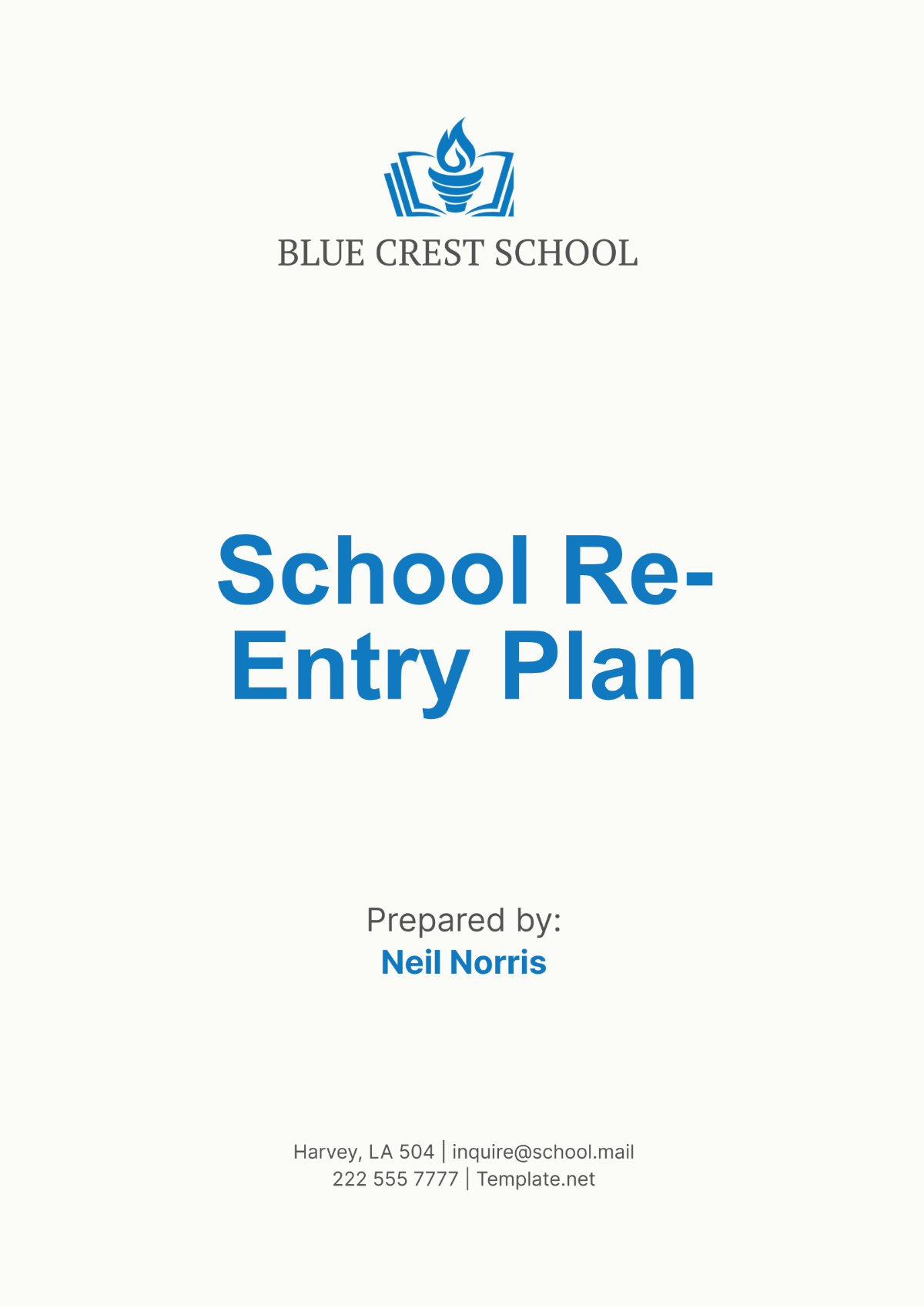
I. Introduction
The purpose of this School Re-Entry Plan is to outline the necessary steps and considerations for reopening [Your Company Name]'s educational institutions in a safe and efficient manner. This plan has been developed with input from administrators, teachers, students, and parents to ensure a comprehensive approach that addresses the various needs and concerns of our community.
We are committed to providing a high-quality education while prioritizing the health and safety of our students and staff. This plan includes guidelines on health and safety protocols, instructional strategies, and support services that will be implemented as we transition back to in-person learning.
II. Health and Safety Protocols
Ensuring the health and safety of students, staff, and visitors is paramount. This comprehensive plan includes stringent measures for health screenings, mask-wearing, hand hygiene, social distancing, cleaning, and disinfecting to align with US laws and standards.
A. Screening Procedures
Daily health screenings are essential to prevent the spread of infectious diseases.
Temperature Checks: Non-contact infrared thermometers will be used at designated entry points. Individuals with a temperature of 100.4°F (38°C) or higher will be denied entry and advised to seek medical attention.
Symptom Screening: A daily health questionnaire, completed either electronically or on paper, will check for symptoms such as cough, shortness of breath, or loss of taste and smell. Anyone exhibiting symptoms will not be permitted on campus.
Isolation Protocols: Individuals failing the health screening will be directed to an isolation area and must be picked up immediately. A healthcare provider's clearance will be required before returning to school.
B. Personal Protective Equipment (PPE)
Minimizing the spread of infectious diseases requires proper use of PPE.
Face Masks: Mandatory for all students, staff, and visitors indoors and when social distancing is not possible outdoors. Masks will be provided to those who do not have them.
Face Shields: Additional protection for staff and students in close contact situations, such as in special education settings.
Gloves: Required for staff involved in cleaning, food preparation, and health screenings. Gloves must be changed frequently and disposed of properly.
Training: Comprehensive training on the correct use of PPE, including wearing, removing, and disposing of masks and gloves safely.
C. Sanitation Protocols
Enhanced cleaning and disinfecting are critical to maintaining a safe school environment.
Daily Cleaning: Classrooms, restrooms, and common areas will be cleaned and disinfected at least once daily, focusing on high-touch surfaces like doorknobs, light switches, and desks.
Frequent Disinfection: High-traffic areas and frequently touched surfaces will be disinfected multiple times throughout the day using EPA-approved disinfectants.
Hand Hygiene Stations: Hand sanitizer dispensers will be installed at entry points, classrooms, and common areas. Regular hand washing with soap and water will be encouraged.
Ventilation: HVAC systems will be adjusted to increase outdoor air circulation, using high-efficiency air filters.
D. Response to Positive Cases
A swift response to positive COVID-19 cases is crucial to preventing outbreaks.
Isolation and Notification: Positive cases will be isolated, and the local health department notified immediately. Contact tracing will identify and notify individuals in close contact.
Quarantine and Testing: Identified individuals will quarantine for 14 days and be advised to get tested. Symptomatic individuals during quarantine should seek medical attention.
Communication: Transparent communication with the school community, while respecting privacy laws such as HIPAA and FERPA, will be maintained. Notifications about positive cases and necessary closures or remote learning shifts will be promptly communicated.
Deep Cleaning: Affected areas will be closed off and thoroughly cleaned and disinfected before reopening.
Implementing these health and safety protocols will create a safe and supportive environment for all school community members.
III. Instructional Strategies
To ensure a seamless transition back to school and accommodate the diverse learning needs of our students, our academic plan incorporates in-person, hybrid, and remote learning models. Each approach is designed to maintain educational continuity and support student success.
A. In-Person Learning Adaptations
Returning to in-person learning requires several adaptations to ensure safety while providing a high-quality educational experience.
Classroom Layout: Desks will be arranged to maintain six feet of distance between students. Where possible, physical barriers such as plexiglass dividers will be installed.
Scheduling Adjustments: Staggered schedules will reduce the number of students in the building at one time, with alternating days or weeks of attendance.
Outdoor Learning: Utilizing outdoor spaces for instruction when weather permits to enhance ventilation and reduce indoor crowding.
Health Protocols: Regular hand washing, mandatory mask-wearing, and sanitation of shared materials and surfaces will be enforced.
B. Hybrid Learning Models
A hybrid model combines in-person and remote learning to reduce the number of students on campus while continuing education.
Rotational Attendance: Students will be divided into groups that rotate between in-person and remote learning. For example, Group A attends school on Mondays and Wednesdays, while Group B attends on Tuesdays and Thursdays, with alternating Fridays.
Integrated Curriculum: The curriculum will be designed to ensure that in-person and remote activities complement each other, with assignments and projects that bridge the two learning environments.
Teacher Collaboration: Teachers will collaborate to align their in-person and remote instruction, ensuring consistency in lesson delivery and assessment.
C. Remote Learning Contingencies
To accommodate students who cannot return to in-person learning or in case of another closure, robust remote learning plans are in place.
Virtual Classrooms: Teachers will use online platforms such as Google Classroom or Microsoft Teams to conduct live classes, share materials, and facilitate discussions.
Asynchronous Learning: Recorded lessons and online assignments will be available for students to complete at their own pace, ensuring flexibility.
Technical Support: Students and families will have access to technical support for hardware and software issues, ensuring uninterrupted learning.
D. Special Education Provisions
Providing tailored support for students with special needs is a priority in all learning models.
Individualized Education Programs (IEPs): IEPs will be reviewed and adjusted as necessary to accommodate the unique needs of each student in the current learning environment.
Specialized Instruction: Special education teachers will provide both in-person and virtual support, ensuring continuity of services.
Paraprofessional Support: Paraprofessionals will be available to assist students during in-person and remote learning, offering one-on-one support as needed.
Family Collaboration: Regular communication with families to discuss progress, challenges, and adjustments to support plans.
IV. Communication Plan
Effective communication with all stakeholders is essential for transparency and the timely dissemination of information. This section outlines the communication channels, frequency and type of updates, stakeholder engagement strategies, and crisis communication protocols.
A. Communication Channels
Utilizing a variety of communication channels ensures that information reaches all members of the school community efficiently.
Email: Regular updates and important announcements will be sent directly to students, parents, and staff via email. This allows for detailed communication and easy reference.
Website: The school website will serve as a central hub for information, including updates, resources, and FAQs. A dedicated section for re-entry plans and protocols will be maintained.
Social Media: Platforms such as Facebook, Twitter, and Instagram will be used for quick updates, reminders, and engagement with the community. These platforms allow for real-time interaction and broad reach.
Newsletters: Monthly newsletters will be distributed electronically and in print to provide comprehensive updates on school activities, policies, and important dates.
Automated Phone Calls: For urgent updates and reminders, automated phone calls will be used to ensure immediate dissemination of critical information.
B. Frequency and Type of Updates
The table below outlines the schedule and nature of updates to keep stakeholders informed:
Update Frequency | Type of Update |
|---|---|
Daily | Health and safety updates |
Weekly | General school updates, upcoming events |
Monthly | Newsletters, detailed reports |
As Needed | Emergency notifications, urgent updates |
C. Stakeholder Engagement Strategies
Engagement with stakeholders is vital for building trust and ensuring effective communication. The table below outlines our engagement strategies:
Stakeholder Group | Engagement Strategy |
|---|---|
Students | Regular class meetings, surveys, virtual town halls |
Parents | Parent-teacher conferences, surveys, PTA meetings, virtual Q&A sessions |
Staff | Staff meetings, professional development sessions, feedback surveys, virtual forums |
Community | Community newsletters, public meetings, partnerships with local organizations, social media interactions |
D. Crisis Communication Protocols
In the event of a crisis, clear and rapid communication is essential to ensure the safety and well-being of the school community.
Immediate Response: The designated crisis communication team will be activated immediately to coordinate the response. This team includes the principal, assistant principal, communications officer, and relevant staff members.
Information Dissemination: Initial information will be disseminated through all available channels, including email, automated phone calls, the school website, and social media. Updates will be provided as more information becomes available.
Media Relations: A spokesperson will be designated to handle media inquiries and provide official statements. Press releases will be prepared and distributed as needed.
Parent and Staff Communication: Detailed information and instructions will be communicated directly to parents and staff through email and phone calls. Regular updates will be provided to keep everyone informed of the situation and any necessary actions.
Post-Crisis Follow-Up: After the crisis, a debriefing session will be conducted to evaluate the response and identify areas for improvement. A report will be prepared and shared with stakeholders, outlining the response and any changes to protocols.
V. Mental Health and Emotional Support
Supporting the mental health and emotional well-being of our students and staff is a top priority. This section outlines the resources and support systems available to help them cope with the stress and anxiety related to the pandemic and re-entry.
A. Counseling Services
Our counseling services provide confidential and compassionate support to individuals facing emotional and psychological challenges. Our licensed counselors offer:
Individual and Group Counseling: Sessions provide a safe space for expression and working through challenges.
Crisis Intervention: Immediate support and intervention in mental health crises.
Referral Services: Connections to external mental health professionals and community resources.
Confidentiality: Adherence to legal and ethical standards regarding confidentiality.
Accessibility: Services accessible to all, regardless of ability to pay.
Awareness Campaigns: Regular campaigns and programs to promote mental health awareness and reduce stigma.
B. Mental Health Resources
The list below includes national organizations and hotlines that provide guidance and support for mental health challenges. These resources offer valuable information and assistance to individuals seeking help for themselves or others.
National Alliance on Mental Illness (NAMI)
Substance Abuse and Mental Health Services Administration (SAMHSA)
American Psychological Association (APA)
Mental Health America (MHA)
Crisis Text Line: Text ["HOME" to 741741] for free crisis counseling
National Suicide Prevention Lifeline: [1-800-273-TALK (8255)]
C. Emotional Support Programs
Explore various programs aimed at nurturing emotional well-being and resilience. From peer support groups to stress management workshops, these programs offer tools and strategies to cope with stress and enhance mental health.
Peer support groups
Mindfulness and meditation sessions
Art and music therapy programs
Stress management workshops
Yoga and exercise classes
D. Training for Staff on Recognizing Mental Health Issues
Staff will receive training to recognize signs of mental health issues in students and colleagues, allowing for early intervention and support.
VI. Operational Procedures
In preparation for reopening, this section outlines key logistical aspects to ensure a safe and efficient return to school:
Bus Transportation Protocols: To safeguard students and drivers, protocols for safe distancing and sanitation on buses will be implemented.
Cafeteria and Meal Distribution Plans: Modified meal services, including grab-and-go options and adjusted dining setups, will be in place to ensure safe meal distribution.
Modified Class Schedules: Adjustments to class schedules will accommodate social distancing guidelines and reduce classroom crowding.
Staggered Arrival and Dismissal Times: Staggered times for arrival and dismissal will be implemented to minimize congestion and ensure safe entry and exit from the school premises.
VII. Technology and Infrastructure
Preparing for a blend of in-person and remote learning, this section focuses on ensuring robust technological support. It addresses device distribution, internet access solutions, technical support for students and staff, and digital learning platforms.
Component | Description |
|---|---|
Device Distribution | Distribution of devices such as laptops or tablets to students and staff for use in both in-person and remote learning. |
Internet Access Solutions | Solutions to ensure all students have reliable internet access, including partnerships with ISPs or mobile hotspots. |
Technical Support | Providing technical assistance to students and staff for troubleshooting issues with devices and digital platforms. |
Digital Learning Platforms | Selection and implementation of platforms for delivering educational content and facilitating online collaboration. |
VIII. Professional Development and Training
Empowering our staff with the skills and knowledge necessary for the new learning environment is paramount. This section outlines comprehensive training and professional development programs designed to ensure the safety of our school community and enhance the quality of education.
A. Training on Health and Safety Measures
Staff will receive thorough training on health and safety protocols, including proper hygiene practices, social distancing guidelines, and recognizing symptoms of illness. Training will also cover emergency procedures and response protocols.
B. Instructional Technology Training
Given the increased reliance on technology, staff will undergo training to effectively use digital tools and platforms for instruction. This includes training on virtual classroom management, online assessment methods, and troubleshooting common technical issues.
C. Pedagogical Strategies for Hybrid/Remote Learning
To maintain instructional continuity, staff will learn pedagogical strategies tailored for hybrid and remote learning environments. This includes methods for engaging students in virtual settings, delivering effective online lectures, and adapting curriculum for remote delivery.
D. Support for Staff Well-being
Recognizing the importance of staff well-being, we will provide resources and support systems to help staff cope with the demands of the new learning environment. This includes access to counseling services, stress management workshops, and promoting work-life balance.
Our goal is to ensure that our staff is equipped with the necessary skills and support to provide high-quality education while prioritizing the health and well-being of our school community.
IX. Policies and Governance
Effective policies and governance are essential for a smooth and compliant re-entry process. This section outlines the necessary updates and guidelines that ensure our school operates within local, state, and federal regulations. These measures are designed to protect the health and safety of our school community while maintaining educational standards.
A. Policy Adjustments (Attendance, Grading, etc.)
To accommodate the unique challenges of the re-entry process, several existing policies will be adjusted. Attendance policies will be updated to reflect both in-person and remote learning scenarios, allowing for flexibility in student participation. Grading policies will also be revised to ensure fairness and equity, taking into account the diverse learning environments students may encounter. Additionally, policies related to extracurricular activities and discipline will be reviewed and adjusted as needed to align with new health and safety guidelines.
B. Legal and Compliance Guidelines
Compliance with legal and regulatory requirements is critical. Our re-entry plan will adhere to all relevant laws and regulations, including those related to health and safety, privacy, and education. This includes following guidelines issued by the Centers for Disease Control and Prevention (CDC), the Department of Education, and local health departments. Legal counsel will be consulted regularly to ensure that all policies and procedures are compliant with current laws and any new regulations that may arise.
C. Coordination with Health Authorities
Effective coordination with health authorities is vital for monitoring and managing health risks. We will establish regular communication channels with local health departments to stay informed about the latest health advisories and requirements. This includes reporting any positive cases of COVID-19 and following quarantine and isolation protocols as directed by health officials. Additionally, we will collaborate with health authorities to facilitate testing and vaccination efforts as needed.
D. Emergency Preparedness Plans
Emergency preparedness is a cornerstone of our governance strategy. Updated emergency plans will include protocols for various scenarios, such as outbreaks of illness, natural disasters, and other emergencies. These plans will outline clear procedures for evacuation, lockdown, and communication with parents and guardians. Regular drills and training sessions will be conducted to ensure that staff and students are familiar with these procedures and can respond effectively in an emergency.
By updating our policies and governance structures, we aim to provide a safe, compliant, and supportive environment for all members of our school community.
This School Re-Entry Plan represents our commitment to providing a safe, supportive, and effective learning environment for all students, staff, and community members. Through comprehensive health and safety protocols, robust instructional strategies, clear communication, and ongoing professional development, we aim to navigate the challenges of the new educational landscape with resilience and adaptability. Our coordinated efforts with health authorities, updated operational procedures, and strong governance frameworks ensure compliance with all regulations. Together, we will foster an environment that prioritizes well-being and educational excellence, allowing our school community to thrive in these unprecedented times.
- 100% Customizable, free editor
- Access 1 Million+ Templates, photo’s & graphics
- Download or share as a template
- Click and replace photos, graphics, text, backgrounds
- Resize, crop, AI write & more
- Access advanced editor
Prepare for a safe return to school with the School Re-Entry Plan Template from Template.net. This editable and customizable template helps you create a comprehensive and organized re-entry plan. Editable in our Ai Editor Tool, it offers a user-friendly experience, making it easy to tailor to your specific needs. Ensure a smooth transition with this essential re-entry plan template.
You may also like
- Finance Plan
- Construction Plan
- Sales Plan
- Development Plan
- Career Plan
- Budget Plan
- HR Plan
- Education Plan
- Transition Plan
- Work Plan
- Training Plan
- Communication Plan
- Operation Plan
- Health And Safety Plan
- Strategy Plan
- Professional Development Plan
- Advertising Plan
- Risk Management Plan
- Restaurant Plan
- School Plan
- Nursing Home Patient Care Plan
- Nursing Care Plan
- Plan Event
- Startup Plan
- Social Media Plan
- Staffing Plan
- Annual Plan
- Content Plan
- Payment Plan
- Implementation Plan
- Hotel Plan
- Workout Plan
- Accounting Plan
- Campaign Plan
- Essay Plan
- 30 60 90 Day Plan
- Research Plan
- Recruitment Plan
- 90 Day Plan
- Quarterly Plan
- Emergency Plan
- 5 Year Plan
- Gym Plan
- Personal Plan
- IT and Software Plan
- Treatment Plan
- Real Estate Plan
- Law Firm Plan
- Healthcare Plan
- Improvement Plan
- Media Plan
- 5 Year Business Plan
- Learning Plan
- Marketing Campaign Plan
- Travel Agency Plan
- Cleaning Services Plan
- Interior Design Plan
- Performance Plan
- PR Plan
- Birth Plan
- Life Plan
- SEO Plan
- Disaster Recovery Plan
- Continuity Plan
- Launch Plan
- Legal Plan
- Behavior Plan
- Performance Improvement Plan
- Salon Plan
- Security Plan
- Security Management Plan
- Employee Development Plan
- Quality Plan
- Service Improvement Plan
- Growth Plan
- Incident Response Plan
- Basketball Plan
- Emergency Action Plan
- Product Launch Plan
- Spa Plan
- Employee Training Plan
- Data Analysis Plan
- Employee Action Plan
- Territory Plan
- Audit Plan
- Classroom Plan
- Activity Plan
- Parenting Plan
- Care Plan
- Project Execution Plan
- Exercise Plan
- Internship Plan
- Software Development Plan
- Continuous Improvement Plan
- Leave Plan
- 90 Day Sales Plan
- Advertising Agency Plan
- Employee Transition Plan
- Smart Action Plan
- Workplace Safety Plan
- Behavior Change Plan
- Contingency Plan
- Continuity of Operations Plan
- Health Plan
- Quality Control Plan
- Self Plan
- Sports Development Plan
- Change Management Plan
- Ecommerce Plan
- Personal Financial Plan
- Process Improvement Plan
- 30-60-90 Day Sales Plan
- Crisis Management Plan
- Engagement Plan
- Execution Plan
- Pandemic Plan
- Quality Assurance Plan
- Service Continuity Plan
- Agile Project Plan
- Fundraising Plan
- Job Transition Plan
- Asset Maintenance Plan
- Maintenance Plan
- Software Test Plan
- Staff Training and Development Plan
- 3 Year Plan
- Brand Activation Plan
- Release Plan
- Resource Plan
- Risk Mitigation Plan
- Teacher Plan
- 30 60 90 Day Plan for New Manager
- Food Safety Plan
- Food Truck Plan
- Hiring Plan
- Quality Management Plan
- Wellness Plan
- Behavior Intervention Plan
- Bonus Plan
- Investment Plan
- Maternity Leave Plan
- Pandemic Response Plan
- Succession Planning
- Coaching Plan
- Configuration Management Plan
- Remote Work Plan
- Self Care Plan
- Teaching Plan
- 100-Day Plan
- HACCP Plan
- Student Plan
- Sustainability Plan
- 30 60 90 Day Plan for Interview
- Access Plan
- Site Specific Safety Plan
